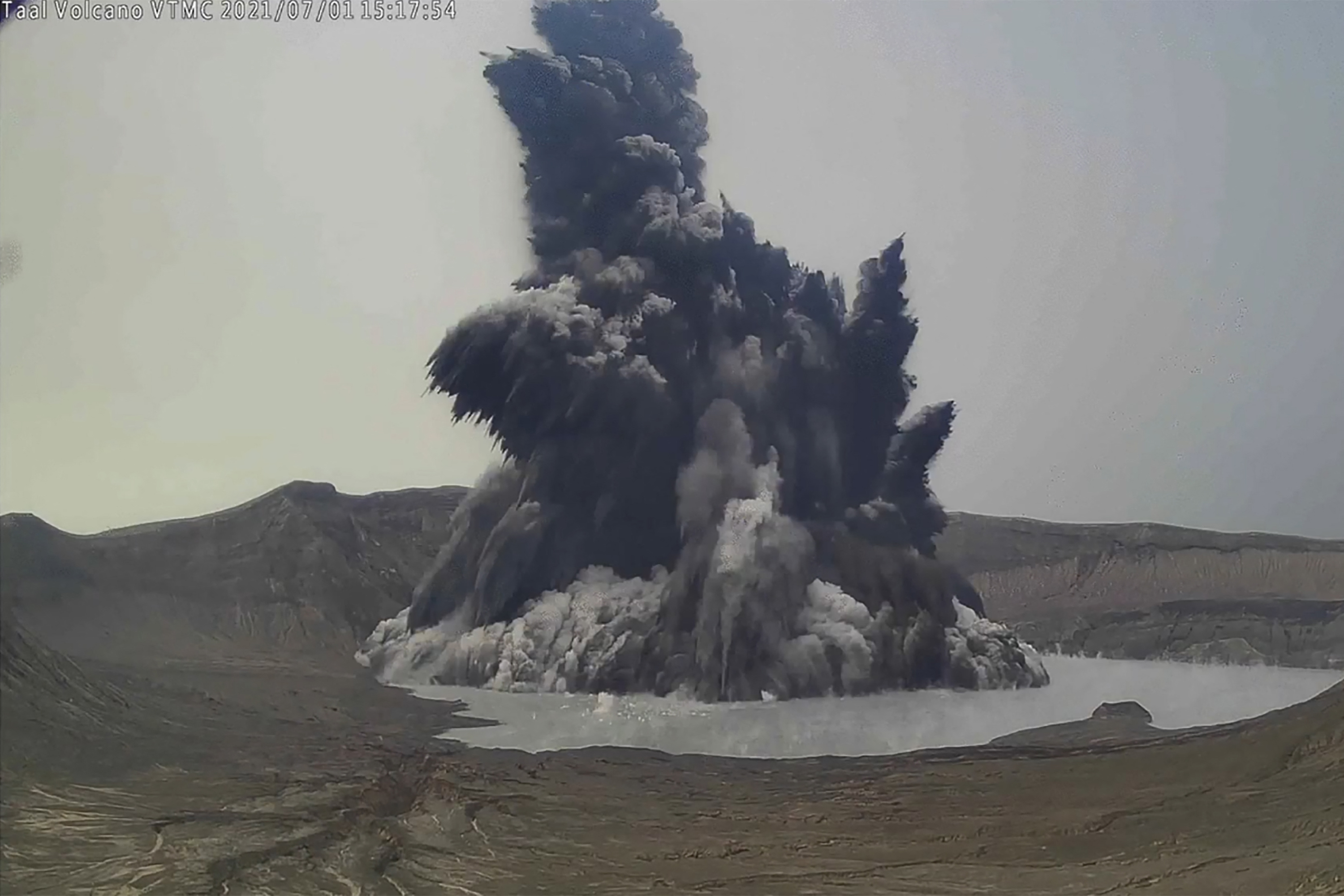
More than 2,000 people have been forced to leave their houses after the Philippines’ Taal volcano started spewing steam, filling the air with toxic gas and prompting health warnings.
Sitting on a scenic lake, Taal has been belching sulphur dioxide for several days, creating a thick haze over Manila and several surrounding provinces.
At least 2,400 people have so far fled since the government called for evacuations of hamlets on the lake’s shores, provincial disaster official Joselito Castro told AFP news agency.
“We expect more residents to evacuate over the coming days,” he said, adding that they were seeking refuge either in schools closed by the coronavirus pandemic or in the homes of relatives.
Taal is one of the most active volcanoes in a nation hit periodically by eruptions and earthquakes due to its location on the Pacific “Ring of Fire” – a zone of intense seismic activity.
It lies just 50km (30 miles) south of Manila and for much of the past week has discharged volcanic smog that has blotted out the sun in the capital.
Civil defence officials have warned that upwards of 317,000 people could be vulnerable to toxic gas emissions from the volcano under the current eruption’s worst-case scenario.
‘We don’t feel safe’
In Agoncillo, a municipality about 120km (75 miles) south of Manila, police officers holding megaphones went from house to house asking people to leave.
Residents have just a few hours to secure their belongings and move to a safer area – once again. In January last year, Taal’s previous eruption, shot ash 15km (nine miles) high and spewed red-hot lava, crushing scores of homes, killing livestock and sending more than 135,000 people into shelters.
Some families were now reluctant to leave their homes, worried about possible outbreaks of COVID-19 in crowded spaces.
“We also don’t feel too safe in evacuation centres, so we’ll stay with our relatives,” Agoncillo resident Ramon Anete told Al Jazeera.
At a centre in the town of Laurel, evacuee Imelda Reyes said it was too hurtful to see her children suffering.
“l don’t really know what to say anymore,” she told Al Jazeera, struggling to hold back tears. “I am just praying. It is a really difficult situation.”
Across the hall, another evacuee, Imelda Calapatiya, was also distressed.
“Is it the volcano, is it getting sick, getting COVID?” she asked. “It’s really hard I have so many children. I can’t sleep just thinking about it.”







